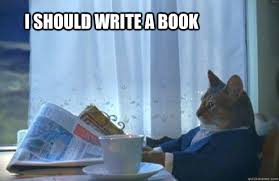 Recently I read Anthony Doerr’s Pulitzer-prize winning All the Light We Cannot See. Magnificent novel! One of the most awesome aspects of Doerr’s writing is his ability to paint verb pictures.
Recently I read Anthony Doerr’s Pulitzer-prize winning All the Light We Cannot See. Magnificent novel! One of the most awesome aspects of Doerr’s writing is his ability to paint verb pictures.
Writing Tip for Today: I often urge writers to use strong verbs in their fiction. A verb picture is worth even more in these circumstances:
Write Tighter
One of the first techniques I show writing students is how to switch from passive constructions and “was ing” writing to finding precise and active verbs instead. The shift from “John was walking down the street” to “John marched down the street” results in tighter and more picturesque writing. Anthony Doerr takes the idea one step further by pairing his action with startling verbs which one doesn’t usually see used that way, but which make the action leap off the page in a particular and satisfying way. Instead of writing that trees are on fire, the text reads, “The trees seethe.” Linking human emotion to a tree imbues the scene with deeper emotion overall.
Cut Down on Modifiers and Metaphors
Modifiers have their place, but new writers often overuse them or become trapped in generalized words which add little to the meaning. Take a look at your use of modifiers, metaphors and similes. A common mistake is overusing these tools, which instead of adding to the scene, actually weakens the writing. Doerr could have written, “Thick black smoke in the valley is like a chimney spewing ash.” But he keeps the tension and interest high by instead writing, “Thick ribbons of smoke stripe the valley.” It’s simpler and gives a specific picture of a large area.
Get Creative Not Cute
Every year, lists of student metaphors and similes bring smiles to writers everywhere. Unless you’re writing humor, however, you don’t really want readers laughing. Be sure your verb usage creates a sturdy and particular mental picture. The awful simile, Her face was a perfect oval, like a circle that had its two other sides gently compressed by a Thigh Master, is an actual student effort that unfortunately misses the mark and gives readers the giggles. In contrast, Doerr’s masterful use of “He sounds like her father when he is about to say something silly,” gives readers a closer look at characters who feel very real. One way to check your use of metaphor, simile and the like is to sift for tone. Is the general tone of your work serious, straightforward or humorous? If you break with the overall tone of your fiction, be sure the literary device you use doesn’t stick out like a sore Thigh Master. Sorry—couldn’t resist mangling a simile too. But we can all learn a lot from Anthony Doerr about using verbs to drive our action.





Thanks for the additional info Linda. I’m on my first edit and struggling with the showing not telling. Every example and reminder is so helpful to me.
Maureen,
I’m so happy you’re writing your story! Keep up the good work and please let me know hopw it’s going.
All the Best,
Linda